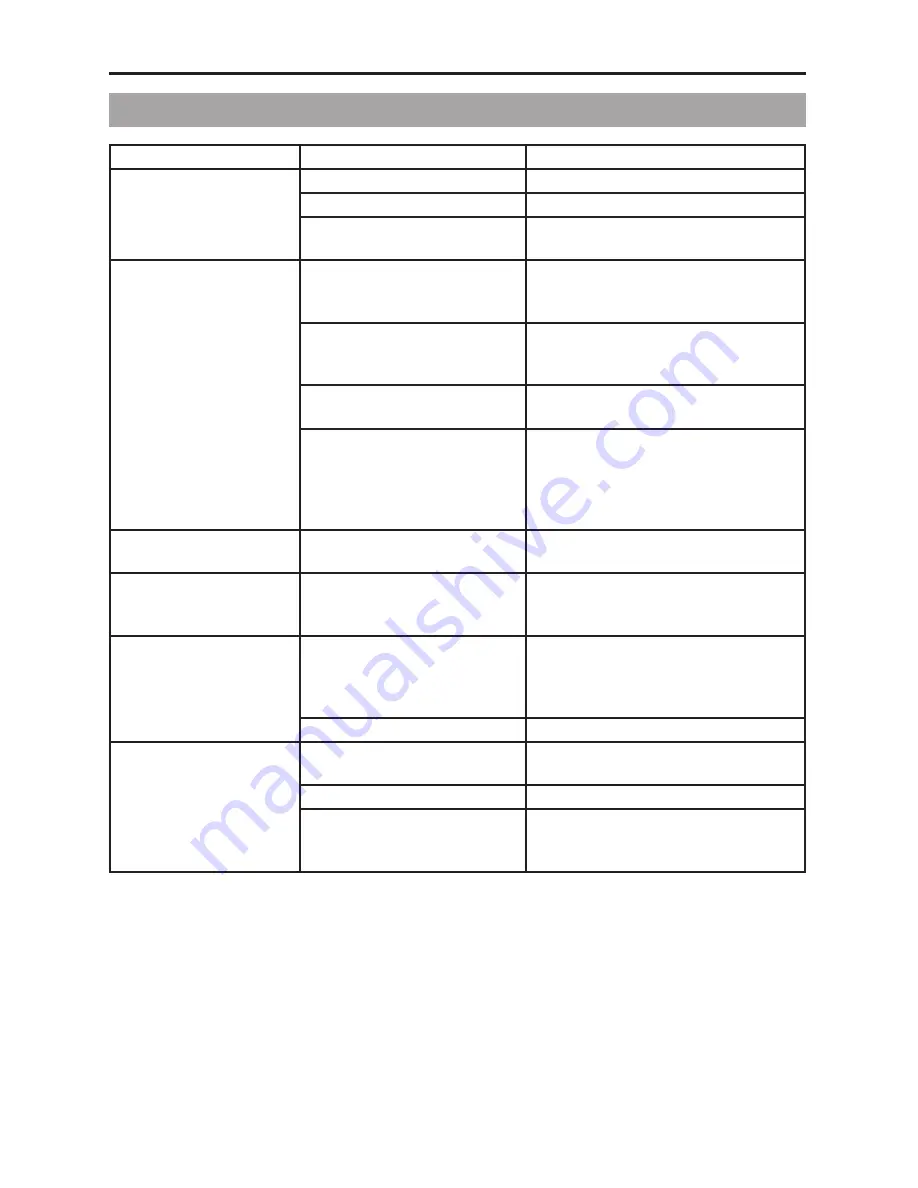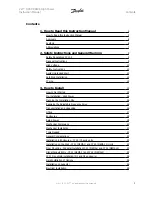
ENGLISH • 13
TROUBLESHOOTING
Problem
Cause
Solution
No power, no indicator.
Battery is defective
Replace battery
Blown fuse
Check and replace fuse
Lose connections
Check connections, be sure the ports and
plugs come into contact with each other.
The red LED indicator lights.
AC products connected are rated
at more than 100W; overload
shutdown has occurred.
Reduce load, use a product with power rating
less than 100W.
AC products are rated less than
100W, but high starting surge has
caused overload shutdown.
Use a product with starting surge power within
the inverter’s capability (≤ 200W).
The voltage input is too low. Low
voltage shut off occurs.
Charge the battery
Inverter is overheated due to poor
ventilation and has shut down.
Unplug inverter from DC socket and allow to
be cooled for 15 minutes. Remove objects
covering unit. Move the inverter to a cooler
place. Reduce load if continuous operation is
required. Restart.
Inverter runs small loads but
not large loads
Low voltage battery
Charge the battery
Water entered
Water entered the unit
Disconnect the inverter and wipe immediately
with a dry cloth, or permanent damage can
occur with liquid ingress.
Measured inverter output
is too low
Standard “average-reading” AC
voltmeter used to measure output
voltage, resulting in an apparent
reading 5 to 15V too low.
Inverter’s “modified sine wave” output
requires “true RMS” voltmeter for accurate
measurements.
Battery voltage is too low
Recharge battery
Battery run time is less
than expected
AC product power consumption is
higher than rated.
Use a larger battery to make up for increased
power requirement.
Battery is old or properly defective.
Replace battery
Battery is not being properly charged.
Some chargers are not able to fully
recharge a battery. Make sure you us
e a powerful charger.
Содержание PI100LA
Страница 2: ...FIG A 1 2 3 4 6 5 ...
































